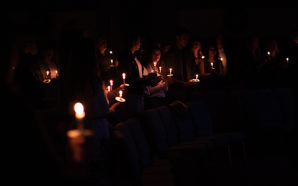National Vocations Awareness Week runs from 4 to 11 August.
This is part two of three of Fr Walter Fogarty’s reflections on St John Vianney.
Read Part One here.
Following the imperial proclamation granting amnesty to deserters, John Vianney returned to his family and set about resuming his studies for the priesthood in 1810.
Despite continuing academic struggles, Abbé Balley was able to persuade Church authorities that Vianney’s pastoral zeal and spiritual life, as well as the commitment to his vocation, more than made up for his academic shortcomings. He was tonsured in 1811 before being ordained priest in 1815.
Following his priestly ordination, Vianney was assigned to Écully as curate to his mentor and champion Balley, who first recognised and encouraged his priestly vocation.
After Balley’s death in 1817, Vianney was appointed to Ars in early 1818. Ars was a small village of some 230 people not far from Lyon. He was to spend the rest of his life in Ars despite at least four desperate attempts to leave the village and parish ministry in order to become a monk.
Commencing his ministry in Ars, Vianney quickly observed that many of the locals were lacking in knowledge about their faith and showed significant indifference towards its practice. On appointing him, Vianney’s bishop commented “There is little love of God in that parish.” This in part was due to the suppression of religion during the Revolution but also was the result of a trending decline in religious observance in the decades prior to the Revolution.
Responding to the indifference, Vianney challenged the locals to examine their behaviour. He was particularly concerned by the lack of Sunday observance; people preferring to work in their fields, and to go drinking and dancing. He openly addressed these issues in his homilies and in the confessional, refusing absolution to those who refused to give up dancing.
Vianney’s strong line was not welcomed by all, but, largely because of his down to earth approach and personal witness, more and more people came to accept his message. Appreciating his pastoral concern, parishioners came to love his common-sense approach to faith and to value his insights into the life of faith. As is well known, Vianney spent many hours each day in the confessional, hearing the confessions not just of his parishioners but also of those who travelled long distances to seek out his advice and have him minster to their needs.
As a means of providing greater catechesis Vianney established in 1824 a free school for girls that three years later developed into La Providence, a shelter for orphaned and destitute children. It was to become a model for similar institutions throughout France.
Along with a strong devotion to the Blessed Sacrament and the Virgin Mary, Vianney had a particular devotion to St Philomena, a young fourth century martyr. Regarding her as his guardian, he credited her with his recovery from a serious illness in 1843, having a chapel and shrine erected in her honour.
Having transformed the lives of the villagers of Ars, Vianney was to become internationally known for his pastoral ministry and life of faith and Ars was to become a centre of pilgrimage.
At the age of 73, Vianney died at Ars on 4 August 1859. Sixteen years later he was proclaimed ‘venerable’ by Pius IX whose successor, Pius X, beatified him in 1905. Pius XI, in 1925, canonised Vianney, declaring him patron saint of parish priests in 1929.
Part three will be published tomorrow.
Fr Walter Fogarty is the parish priest of Sacred Heart Parish, Westmead.
For more information about Vocations in the Diocese of Parramatta, please visit: www.parracatholic.org/vocations/








